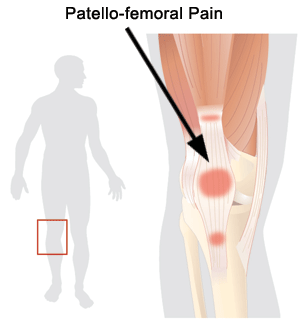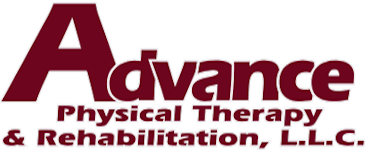Pick a Body Area
Knee Articles- Quadriceps Muscle Strains
- Meniscal Tears
- Anterior Cruciate Ligament (ACL) Tear
- Posterior Cruciate Ligament (PCL) Tear
- Medial Collateral Ligament (MCL) Tear
- Lateral Collateral Ligament (LCL) Tears
- Anterior Knee Pain
- Patello-femoral Pain (Commonly Called Chondromalacia Patella)
- Patellar Tendinitis (Jumper's Knee)
- Knee Osteoarthritis
- Iliotibial Band Friction Syndrome (ITBS)
- Knee Replacement
Patello-femoral Pain (Commonly Called Chondromalacia Patella)

Chondromalacia meaning softening of the patellar cartilage, is a common misdiagnosis. Softening of the cartilage can only be detected by directly visualizing the cartilage during surgery. The correct diagnosis for pain and swelling originating from under the kneecap is Patello-femoral Pain.
Treatment includes pain relief with rest, ice, compression, and elevation. Swelling must be controlled. Anti-inflammatory medications, bracing, and physical therapy are often helpful. Progressive strengthening of the quadriceps is essential. Occasionally, foot orthoses may be helpful. Rarely, surgery is required to assist in realigning the kneecap by releasing the tight structures on the outside of the kneecap and reefing the inner structures.
Possible Treatments
- Aerobic/Endurance Exercise Video
- Core Strengthening Video
- Cryotherapy or Cold Therapy Video
- Electrotherapeutic Modalities
- Gait or Walking Training Video
- Knee Active Range of Motion Video
- Knee Joint Mobilization Video
- Knee Passive Range of Motion Video
- Knee Resistive Range of Motion Video
- Plyometrics Video
- Proprioceptive Neuromuscular Facilitation (PNF) Video
- Proprioception Exercises Video
- Physical Agents
- Soft Tissue Mobilization Video
- Stretching/Flexibility Exercise Video
- Aerobic/Endurance Exercise
Possible Treatment Goals
- Improve Balance
- Decrease Risk of Reoccurrence
- Improve Fitness
- Improve Function
- Optimize Joint Alignment
- Improve Muscle Strength and Power
- Increase Oxygen to Tissues
- Improve Proprioception
- Improve Range of Motion
- Self-care of Symptoms
- Improve Tolerance for Prolonged Activities
Additional Resources
Disclaimer
The information in this medical library is intended for informational and educational purposes only and in no way should be taken to be the provision or practice of physical therapy, medical, or professional healthcare advice or services. The information should not be considered complete or exhaustive and should not be used for diagnostic or treatment purposes without first consulting with your physical therapist, occupational therapist, physician or other healthcare provider. The owners of this website accept no responsibility for the misuse of information contained within this website.
